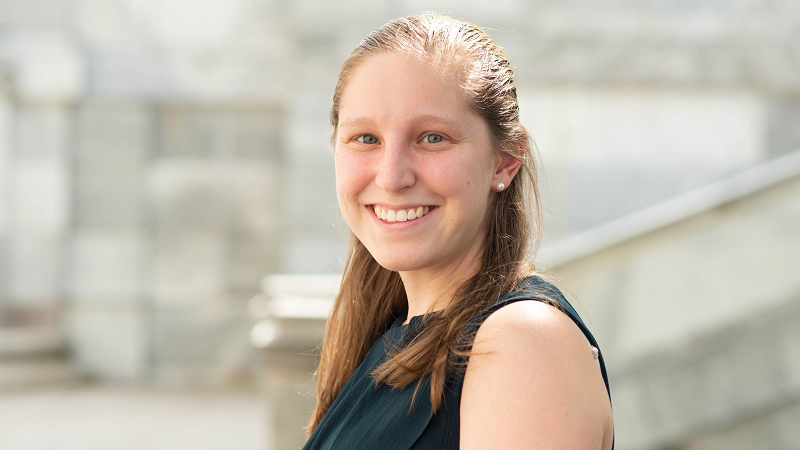I am fascinated by how a single cell – the fertilized egg – gives rise to multicellular structures that are both highly complex and highly ordered. Over the past five years, I have studied this process using a tiny nematode called C. elegans. Remarkably, the C. elegans fertilized egg divides in precisely the same way in every animal to generate exactly the same number of cells with the same cellular identities and the same shapes. I have taken advantage of this invariant development to explore how the two major cell types of the nervous system – neurons and glia – develop connections with one another during embryogenesis.
What did you want to be when you grew up?
For most of my childhood, I wanted to become a grade school teacher. I didn’t discover research or my love for biology until I had the opportunity to intern at New England BioLabs after my freshman year of college. While I am not the type of teacher I pictured as a young child, I am still a teacher of sorts! I relish opportunities to mentor younger trainees in the lab. I have always loved the puzzle of identifying the sticking point when someone is struggling to understand a new concept – and this is no less rewarding in the lab than in the classroom.
What is the trait you admire most in others?
I most admire integrity. I believe this is not only a crucial foundation for interpersonal relationships, but also an essential trait for researchers in the lab. As scientists, we should be driven by a desire to truly understand the biology – whether or not the answer is as we had hoped.
What are some of your interests outside of the lab?
One of the activities I most enjoy outside the lab is yoga. Yoga classes kept me sane through graduate school by giving me structured time to check in on my own mental health. I find yoga to be rejuvenating in a way that makes me both happier and more productive!
What are your hopes for the future?
I dream for a more inclusive scientific community. As a female scientist, I am particularly interested in building a world in which every scientific field and every level of seniority boasts fair representation of all genders. I believe change comes most quickly when we advocate for big structural changes that can help many people all at once. In this case, we need to promote structural changes that make it easier for women and underrepresented minorities to remain on the academic path. In so doing, we will ensure that future generations have diverse role models for what a scientist can be.
Photo by Celia Muto

